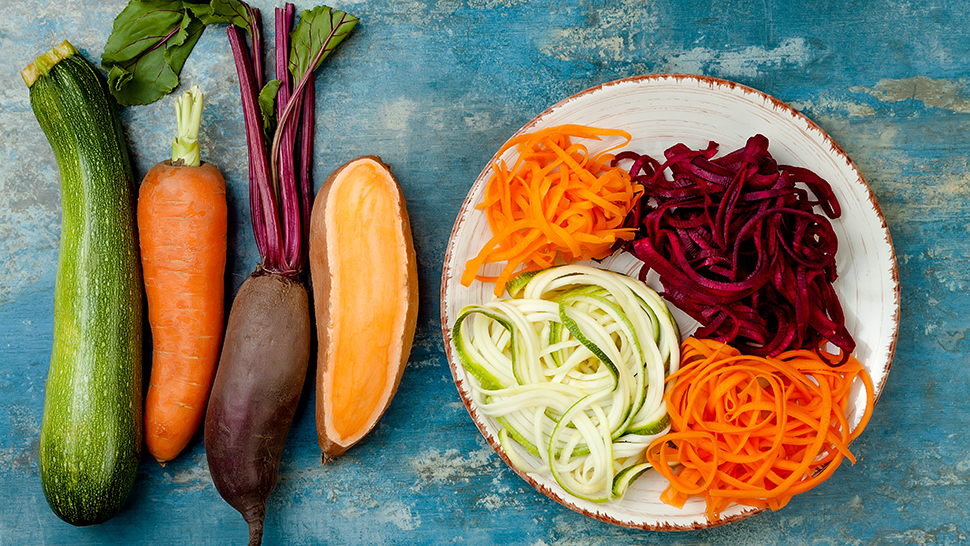
What’s the buzz?
From beet “brats” to smoked carrot “lox,” picking up vegetable butchery can provide a new twist on getting your vegetables.
What does the science say?
Vegetable butchery is the art of cutting and preparing vegetables in unique ways for cooking. It dovetails with the current movement to entice people to eat more vegetables and shift vegetables to the center of the plate, while (hopefully) simultaneously reducing meat consumption. Eco-minded, plant-forward chefs and home cooks alike are creating vegetable-inspired versions of foods traditionally made with animal products — shiitake mushroom “bacon,” anyone? Even grocery stores like Whole Foods are jumping on the trend with actual “vegetable butcher” counters popping up in some of their larger stores with onsite experts ready to give you advice on how to cut and cook your vegetables as well as doing some of the prep work for you, if desired. You’ve probably seen the ever-so-popular cauliflower steak, but have you tried a charred beet “brat,” butternut “squashage,” carrot “hot dog,” or smoked carrot “lox”?
Here’s why you should. Your mother told you it’s important to eat your vegetables, but few Americans (only one in 10!) actually follow that advice. So, beyond the intrigue factor of a romanesco steak, simply learning to cut and prepare vegetables in unique ways may bring more vegetables to Americans’ plates. From cauliflower rice and zucchini noodles to shaved asparagus salads, the rise in unique vegetable preparation can be a way to eat more vegetables and combat “sensory-specific satiety,” when people stop eating because they simply get tired of the food. While we aren’t suggesting that you continue to eat past the point of fullness, one study shows that simply incorporating three vegetables into any dish could result in consuming up to a half-cup more vegetables per meal than when a single vegetable is served of the same total volume.
What’s the takeaway:
Most of us need to eat more vegetables, and the rise of vegetable butchery gives a glimpse into what the future of our food choices might look like: more variety and creativity (and more fiber!). To those non-believers out there, take it from a company of chefs and food loving RDs who’ve been getting creative with vegetables for a long time: Treating your vegetables with a little TLC can create a meal packed with as much flavor and craveability as any meat-centric one Americans have become accustomed to. It’s time to sharpen our palates and our knives and bring on the broccoli!
Looking for some inspiration? Try some of our plant-forward recipes: